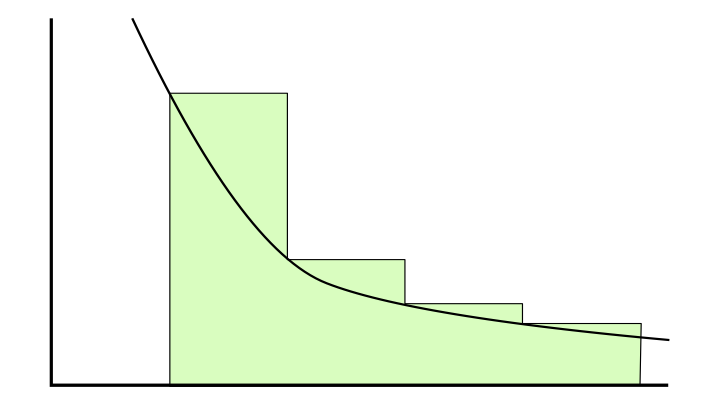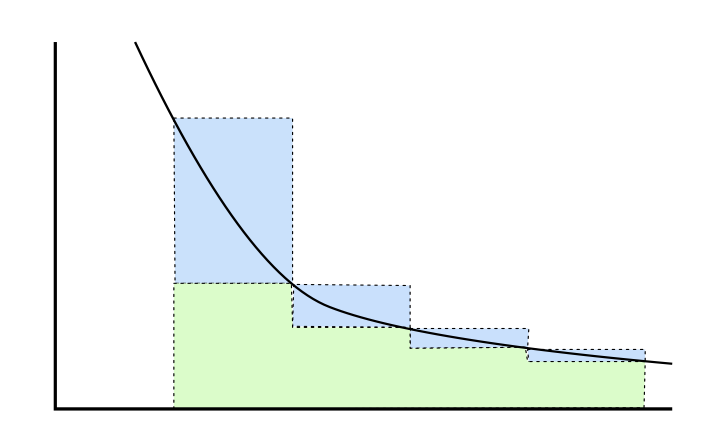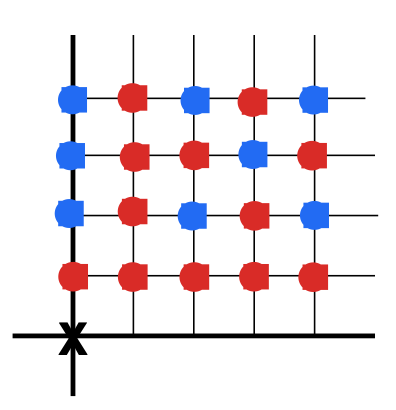2.6: Exercises
- Page ID
- 60305
\( \newcommand{\vecs}[1]{\overset { \scriptstyle \rightharpoonup} {\mathbf{#1}} } \)
\( \newcommand{\vecd}[1]{\overset{-\!-\!\rightharpoonup}{\vphantom{a}\smash {#1}}} \)
\( \newcommand{\id}{\mathrm{id}}\) \( \newcommand{\Span}{\mathrm{span}}\)
( \newcommand{\kernel}{\mathrm{null}\,}\) \( \newcommand{\range}{\mathrm{range}\,}\)
\( \newcommand{\RealPart}{\mathrm{Re}}\) \( \newcommand{\ImaginaryPart}{\mathrm{Im}}\)
\( \newcommand{\Argument}{\mathrm{Arg}}\) \( \newcommand{\norm}[1]{\| #1 \|}\)
\( \newcommand{\inner}[2]{\langle #1, #2 \rangle}\)
\( \newcommand{\Span}{\mathrm{span}}\)
\( \newcommand{\id}{\mathrm{id}}\)
\( \newcommand{\Span}{\mathrm{span}}\)
\( \newcommand{\kernel}{\mathrm{null}\,}\)
\( \newcommand{\range}{\mathrm{range}\,}\)
\( \newcommand{\RealPart}{\mathrm{Re}}\)
\( \newcommand{\ImaginaryPart}{\mathrm{Im}}\)
\( \newcommand{\Argument}{\mathrm{Arg}}\)
\( \newcommand{\norm}[1]{\| #1 \|}\)
\( \newcommand{\inner}[2]{\langle #1, #2 \rangle}\)
\( \newcommand{\Span}{\mathrm{span}}\) \( \newcommand{\AA}{\unicode[.8,0]{x212B}}\)
\( \newcommand{\vectorA}[1]{\vec{#1}} % arrow\)
\( \newcommand{\vectorAt}[1]{\vec{\text{#1}}} % arrow\)
\( \newcommand{\vectorB}[1]{\overset { \scriptstyle \rightharpoonup} {\mathbf{#1}} } \)
\( \newcommand{\vectorC}[1]{\textbf{#1}} \)
\( \newcommand{\vectorD}[1]{\overrightarrow{#1}} \)
\( \newcommand{\vectorDt}[1]{\overrightarrow{\text{#1}}} \)
\( \newcommand{\vectE}[1]{\overset{-\!-\!\rightharpoonup}{\vphantom{a}\smash{\mathbf {#1}}}} \)
\( \newcommand{\vecs}[1]{\overset { \scriptstyle \rightharpoonup} {\mathbf{#1}} } \)
\( \newcommand{\vecd}[1]{\overset{-\!-\!\rightharpoonup}{\vphantom{a}\smash {#1}}} \)
\(\newcommand{\avec}{\mathbf a}\) \(\newcommand{\bvec}{\mathbf b}\) \(\newcommand{\cvec}{\mathbf c}\) \(\newcommand{\dvec}{\mathbf d}\) \(\newcommand{\dtil}{\widetilde{\mathbf d}}\) \(\newcommand{\evec}{\mathbf e}\) \(\newcommand{\fvec}{\mathbf f}\) \(\newcommand{\nvec}{\mathbf n}\) \(\newcommand{\pvec}{\mathbf p}\) \(\newcommand{\qvec}{\mathbf q}\) \(\newcommand{\svec}{\mathbf s}\) \(\newcommand{\tvec}{\mathbf t}\) \(\newcommand{\uvec}{\mathbf u}\) \(\newcommand{\vvec}{\mathbf v}\) \(\newcommand{\wvec}{\mathbf w}\) \(\newcommand{\xvec}{\mathbf x}\) \(\newcommand{\yvec}{\mathbf y}\) \(\newcommand{\zvec}{\mathbf z}\) \(\newcommand{\rvec}{\mathbf r}\) \(\newcommand{\mvec}{\mathbf m}\) \(\newcommand{\zerovec}{\mathbf 0}\) \(\newcommand{\onevec}{\mathbf 1}\) \(\newcommand{\real}{\mathbb R}\) \(\newcommand{\twovec}[2]{\left[\begin{array}{r}#1 \\ #2 \end{array}\right]}\) \(\newcommand{\ctwovec}[2]{\left[\begin{array}{c}#1 \\ #2 \end{array}\right]}\) \(\newcommand{\threevec}[3]{\left[\begin{array}{r}#1 \\ #2 \\ #3 \end{array}\right]}\) \(\newcommand{\cthreevec}[3]{\left[\begin{array}{c}#1 \\ #2 \\ #3 \end{array}\right]}\) \(\newcommand{\fourvec}[4]{\left[\begin{array}{r}#1 \\ #2 \\ #3 \\ #4 \end{array}\right]}\) \(\newcommand{\cfourvec}[4]{\left[\begin{array}{c}#1 \\ #2 \\ #3 \\ #4 \end{array}\right]}\) \(\newcommand{\fivevec}[5]{\left[\begin{array}{r}#1 \\ #2 \\ #3 \\ #4 \\ #5 \\ \end{array}\right]}\) \(\newcommand{\cfivevec}[5]{\left[\begin{array}{c}#1 \\ #2 \\ #3 \\ #4 \\ #5 \\ \end{array}\right]}\) \(\newcommand{\mattwo}[4]{\left[\begin{array}{rr}#1 \amp #2 \\ #3 \amp #4 \\ \end{array}\right]}\) \(\newcommand{\laspan}[1]{\text{Span}\{#1\}}\) \(\newcommand{\bcal}{\cal B}\) \(\newcommand{\ccal}{\cal C}\) \(\newcommand{\scal}{\cal S}\) \(\newcommand{\wcal}{\cal W}\) \(\newcommand{\ecal}{\cal E}\) \(\newcommand{\coords}[2]{\left\{#1\right\}_{#2}}\) \(\newcommand{\gray}[1]{\color{gray}{#1}}\) \(\newcommand{\lgray}[1]{\color{lightgray}{#1}}\) \(\newcommand{\rank}{\operatorname{rank}}\) \(\newcommand{\row}{\text{Row}}\) \(\newcommand{\col}{\text{Col}}\) \(\renewcommand{\row}{\text{Row}}\) \(\newcommand{\nul}{\text{Nul}}\) \(\newcommand{\var}{\text{Var}}\) \(\newcommand{\corr}{\text{corr}}\) \(\newcommand{\len}[1]{\left|#1\right|}\) \(\newcommand{\bbar}{\overline{\bvec}}\) \(\newcommand{\bhat}{\widehat{\bvec}}\) \(\newcommand{\bperp}{\bvec^\perp}\) \(\newcommand{\xhat}{\widehat{\xvec}}\) \(\newcommand{\vhat}{\widehat{\vvec}}\) \(\newcommand{\uhat}{\widehat{\uvec}}\) \(\newcommand{\what}{\widehat{\wvec}}\) \(\newcommand{\Sighat}{\widehat{\Sigma}}\) \(\newcommand{\lt}{<}\) \(\newcommand{\gt}{>}\) \(\newcommand{\amp}{&}\) \(\definecolor{fillinmathshade}{gray}{0.9}\)Exercise \(\PageIndex{1}\)
Apply the division algorithm to the following number pairs. (Hint: replace negative numbers by positive ones.)
- \(110, 7\).
- \(51, -30\).
- \(-138, 24\).
- \(272, 119\).
- \(2378, 1769\).
- \(270, 175560\).
Exercise \(\PageIndex{2}\)
In this exercise we will exhibit the division algorithm applied to polynomials \(x+1\) and \(3x^3+2x+1\) with coefficients in \(\mathbb{Q}, \mathbb{R}\), or \(\mathbb{C}\).
- Apply long division to divide \(3021\) by \(11\). (Hint: \(3021 = 11 \cdot 275 -4\).)
- Apply the exact same algorithm to divide \(3x^3+2x+1\) by \(x+1\). In this algorithm, \(x^k\) behaves as \(10^k\) in (a). (Hint: every step, cancel the highest power of \(x\).)
- Verify that you obtain \(3x^3+2x+1 = (x+1)(3x^2-3x+5)-4\).
- Show that in general, if \(p_{1}\) and \(p_{2}\) are polynomials such that the degree of \(p_{1}\) is greater or equal to the degree of \(p_{2}\), then \(p_{1} = q_{2}p_{2}+p_{3}\), where the degree of \(p_{3}\) is less than the degree of \(p_{2}\). (Hint: perform long division as in (b). Stop when the degree of the remainder is less than that of \(p_{2}\).)
- Why does this division not work for polynomials with coefficients in \(\mathbb{Z}\)? (Hint: replace \(x+1\) by \(2x+1\).)
- Exercise \(\PageIndex{3}\)
- Compute by long division that \(3021 = 11 \cdot 274+7\).
- Conclude from exercise 2.2 that \(3021 = 11(300-30+5)-4\). (Hint: let \(x = 10\).)
- Conclude from exercise 2.2 that \(3 \cdot 163 +2 \cdot 16+1 = 17(3 \cdot 162-3 \cdot 16+5)-4\). (Hint: let \(x = 16\).)
Exercise \(\PageIndex{4}\)
- Use unique factorization to show that any composite number \(n\) must have a prime factor less than or equal to \(\sqrt{n}\).
- Use that fact to prove: If we apply Eratosthenes’ sieve to \(\{2, 3, \cdots, n\}\), it is sufficient to sieve out numbers less than or equal to \(\sqrt{n}\).
Exercise \(\PageIndex{5}\)
We give an elementary proof of Corollary 2.15.
- Show that \(a \cdot \frac{b}{\gcd (a,b)}\) is a multiple of \(a\).
- Show that \(\frac{b}{\gcd (a,b)} \cdot b\) is a multiple of \(b\).
- Conclude that \(\frac{ab}{\gcd (a,b)}\) is a multiple of both \(a\) and \(b\) and thus greater than or equal to \(\mbox{lcm} (a,b)\).
- Show that \(a/(\frac{ab}{\mbox{lcm} (a,b)}) = \frac{\mbox{lcm} (a,b)}{b}\) is an integer. Thus \(\frac{ab}{\mbox{lcm} (a,b)}\) is a divisor of \(a\).
- Similarly, show that \(\frac{ab}{\mbox{lcm} (a,b)}\) is a divisor of \(b\).
- Conclude that \(\frac{ab}{\mbox{lcm} (a,b)} \le \gcd (a,b)\).
- Finish the proof.
Exercise \(\PageIndex{6}\)
It is possible to extend the definition of \(\gcd\) and \(\mbox{lcm}\) to more than two integers (not all of which are zero). For example \(\gcd (24, 27, 54) = 3\).
- Compute \(\gcd (6,10,15)\) and \(\mbox{lcm} (6,10,15)\).
- Give an example of a triple whose \(\gcd\) is one, but every pair of which has a \(\gcd\) greater than one.
- Show that there is no triple \(\{a,b,c\}\) whose \(\mbox{lcm}\) equals \(abc\), but every pair of which has lcm less than the product of that pair. (Hint: consider \(\mbox{lcm} (a \cdot b) \cdot c\).)
Exercise \(\PageIndex{7}\)
- Give the prime factorization of the following numbers: \(12, 392, 1043, 31, 128, 2160, 487\).
- Give the prime factorization of the following numbers: \(12 \cdot 392, 1043 \cdot 31, 128 \cdot 2160\).
- Give the prime factorization of: \(1, 250000, 63^3, 720\), and the product of the last three numbers.
Exercise \(\PageIndex{8}\)
Use the Fundamental Theorem of Arithmetic to prove:
- Be ́zout’s Lemma.
- Euclid’s Lemma.
Exercise \(\PageIndex{9}\)
For positive integers \(m\) and \(n\), suppose that \(m^{\alpha} = n\). Show that \(\alpha = \frac{p}{q}\) with \(\gcd(p,q) = 1\) if and only if
\[\begin{array}{ccccc} {m = \prod_{i=1}^{s} p_{i}^{k_{i}}}&{and}&{n = \prod_{i=1}^{s} p_{i}^{l_{i}}}&{with}&{\forall i pk_{i} = ql_{i}} \end{array} \nonumber\]
Exercise \(\PageIndex{10}\)
We develop the proof of Theorem 2.16 as it was given by Euler. We start by assuming that there is a finite list \(L\) of \(k\) primes. We will show in the following steps how that assumption leads to a contradiction. We order the list according to ascending order of magnitude of the primes. So \(L = \{p_{1}, p_{2}, \cdots, p_{k}\}\) where \(p_{1} = 2, p_{2} = 3, p_{3} = 5\), and so forth, upto the last prime \(p_{k}\).
- Show that \(\prod_{i=1}^{k} \frac{p_{i}}{p_{i}-1}\) is finite, say \(M\).
- Show that for \(r > 0\), \[\prod_{i=1}^{k} \frac{p_{i}}{p_{i}-1} = \prod_{i=1}^{k} \frac{1}{1-p_{i}^{-1}} > \prod_{i=1}^{k} \frac{1-p_{i}^{-r-1}}{1-p_{i}^{-1}} = \prod_{i=1}^{k} (\sum_{ j=0}^{r} p_{i}^{-j}) \nonumber\]
- Use the fundamental theorem of arithmetic to show that there is an \(\alpha (r) > 0\) such that \[\prod_{i=1}^{k} (\sum_{ j=0}^{r} p_{i}^{-j}) = \sum_{l=1}^{\alpha (r)} \frac{1}{l}+R \nonumber\], where \(R\) is a non-negative remainder.
- Show that for all \(K\) there is an \(r\) such that \(\alpha (r) > K\).
- Thus for any \(K\), there is an \(r\) such that \[\prod_{i=1}^{k} (\sum_{ j=0}^{r} p_{i}^{-j}) \ge \sum_{l=1}^{K} \frac{1}{l} \nonumber\]
- Conclude with a contradiction between a) and e). (Hint: the harmonic series \(\sum \frac{1}{l}\) diverges or see exercise 2.11 c).)
Exercise \(\PageIndex{11}\)
In this exercise we consider the Riemann zeta function for real values of \(s\) greater than \(1\).
- Show that for all \(x > -1\), we have \(\mbox{ln} (1+x) \le x\).
- Use Proposition 2.20 and a) to show that \[\mbox{ln} \zeta (s) \le \sum_{\mbox{p prime}} \frac{p^{-s}}{1-p^{-s}} \le \sum_{\mbox{p prime}} \frac{p^{-s}}{1-2^{-s}} \nonumber\]
- Use the following argument to show that \(\lim_{s \rightarrow 1} \zeta (s) = \infty\). \[\sum_{n=1}^{\infty} n^{-1} \ge \sum_{n=1}^{\infty} n^{-s} \ge \int_{1}^{\infty} x^{-s} dx \nonumber\] (For the last inequality, see Figure 4.)
- Show that b) and c) imply that \(\sum_{\mbox{p prime}} p^{-s}\) diverges as \(s \rightarrow 1\).
- Show that – in some sense – primes are more frequent than squares in the natural numbers. (Hint: \(\sum_{n=1}^{\infty} n^{-2}\) converges.)

Figure 4. Proof that \(\sum_{n=1}^{\infty} f(n)\) is greater than \(\int_{1}^{\infty} x^{-s} dx\) if \(f\) is positive and decreasing.
Exercise \(\PageIndex{12}\)
Let \(E\) be the set of even numbers. Let \(a, c\) in \(E\), then \(c\) is divisible by \(a\) if there is \(ab \in E\) so that \(ab = c\). Define a prime \(p\) in \(E\) as a number in \(E\) such that there are no \(a\) and \(b\) in \(E\) with \(ab = p\).
- List the first \(30\) primes in \(E\).
- Does Euclid’s lemma hold in \(E\)? Explain.
- Factor 60 into primes (in \(E\)) in two different ways.
Exercise \(\PageIndex{13}\)
See exercise 2.12. Show that any number in \(E\) is a product of primes in \(E\). (Hint: follow the proof of Theorem 2.14, part (1).)
Exercise \(\PageIndex{14}\)
See exercise 2.12 which shows that unique factorization does not hold in \(E = \{2, 4, 6, \dots\}\). The proof of unique factorization uses Euclid’s lemma. In turn, Euclid’s lemma was a corollary of Be ́zout’s lemma, which depends on the division algorithm. Where exactly does the chain break down in this case?
Exercise \(\PageIndex{15}\)
Let \(L = \{p_{1}, p_{2}, \cdots\}\) be the list of all primes, ordered according ascending magnitude. Show that \(p_{n+1} \le \prod_{i=1}^{n} p_{i}\). (Hint: consider \(d\) as in the proof of Theorem 2.16, let \(p_{n+1}\) be the smallest prime divisor of \(d-1\).)
A much stronger version of exercise 2.15 is the so-called Bertrand’s Postulate. That theorem says that for every \(n \ge 1\), there is a prime in \(\{n+1, \dots, 2n\}\). It was proved by Chebyshev. Subsequently the proof was simplified by Ramanujan and Erdo ̈s [18].
Exercise \(\PageIndex{16}\)
Let \(p\) and \(q\) primes greater than or equal to \(5\).
- Show that \(p = 12q+r\) where \(r \in \{1,5,7,11\}\). (The same holds for \(q\).)
- Show that \(24|p^2-q^2\). (Hint: use (a) to reduce this to \({4 \choose 2} = 6\) cases.)
Exercise \(\PageIndex{17}\)
A square full number is a number \(n > 1\) such that each prime factor occurs with a power at least \(2\). A square free number is a number \(n > 1\) such that each prime factor occurs with a power at most \(1\).
- If \(n\) is square full, show that there are positive integers \(a) and \(b\) such that \(n = a^{2}b^{3}\).
- Show that every integer greater than one is the product of a square free number and a square number.
Exercise \(\PageIndex{18}\)
Let \(L = \{p_{1}, p_{2},\dots\}\) be the list of all primes, ordered ac- cording ascending magnitude. The numbers \(E_{n} = 1 + \prod_{i=1}^{n} p_{i}\) are called Euclid numbers.
- Check the primality of \(E_{1}\) through \(E_{6}\).
- Show that \(E_{n} = _{4} 3\_. (Hint: \(E_{n}-1\) is twice an odd number.)
- Show that for \(n \le 3\) the decimal representation of \(E_{n}\) ends in a \(1\). (Hint: look at the factors of \(E_{n}\).)
Exercise \(\PageIndex{19}\)
Twin primes are a pair of primes of the form \(p\) and \(p+2\).
- Show that the product of two twin primes plus one is a square.
- Show that \(p > 3\), the sum of twin primes is divisible by \(12\). (Hint: see exercise 2.16)
Exercise \(\PageIndex{20}\)
Show that there arbitrarily large gaps between successive primes. More precisely, show that every integer in \(\{n!+2, n!+3, \dots n!+n\}\) is composite.
The usual statement for the fundamental theorem of arithmetic includes only natural numbers \(n \in \mathbb{N}\) (i.e. not \(\mathbb{Z}\)) and the common proof uses induction on n. We review that proof in the next two problems.
Exercise \(\PageIndex{21}\)
- Prove that \(2\) can be written as a product of primes.
- Let \(k > 2\). Suppose all numbers in \(\{1, 2, \dots k\}\) can be written as a product of primes (or \(1\)). Show that \(k+1\) is either prime or composite.
- If in (b), \(k+1\) is prime, then all numbers in \(\{1, 2, \dots k+1\}\) can be written as a product of primes (or \(1\)).
- If in (b), \(k+1\) is composite, then there is a divisor \(d \in \{2,\dots k\}\) such that \(k+1 = dd'\).
- Show that the hypothesis in (b) implies also in this case, all numbers in \(\{1, 2, \dots k+1\}\) can be written as a product of primes (or \(1\)).
- Use the above to formulate the inductive proof that all elements of \(\mathbb{N}\) can be written as a product of primes.
Exercise \(\PageIndex{22}\)
The set-up of the proof is the same as in exercise 2.21. Use induction on \(n\). We assume the result of that exercise.
- Show that \(n = 2\) has a unique factorization.
- Suppose that if for \(k > 2, \{2, \dots k\}\) can be uniquely factored. Then there are primes \(p_{i}\) and \(q_{i}\), not necessarily distinct, such that \[k+1 = \prod_{i=1}^{s} p_{i} = \prod_{i=1}^{r} q_{i} \nonumber\]
- Show that then \(p_{1}\) divides \(\prod_{i=1}^{r} q_{i}\) and so, Corollary 2.12 implies that there is a \(j \le r\) such that \(p_{1} = q_{j}\).
- Relabel the \(q_{i}'\)s, so that \(p_{1} = q_{1}\) and divide \(n\) by \(p_{1} = q_{1}\). Show that \[\frac{k+1}{q_{1}} = \prod_{i=2}^{s} p_{i} = \prod_{i=2}^{r} q_{i} \nonumber\]
- Show that the hypothesis in (b) implies that the remaining \(p_{i}\) equal the remaining \(q_{i}\). (Hint: \(\frac{k}{q_{1}} \le k\).)
- Use the above to formulate the inductive proof that all elements of \(\mathbb{N}\) can be uniquely factored as a product of primes.
Here is a different characterization of gcd and lcm. We prove it as a corollary of the prime factorization theorem.
Corollary 2.23
- A common divisor \(d > 0\) of \(a\) and \(b\) equals \(\gcd(a, b)\) if and only if every common divisor of \(a\) and \(b\) is a divisor of \(d\).
- Also, a common multiple \(d > 0\) of \(a\) and \(b\) equals \(\mbox{lcm} (a, b)\) if and only if every common multiple of \(a\) and \(b\) is a multiple of \(d\).
Exercise \(\PageIndex{23}\)
Use the characterization of \(\gcd(a, b)\) and \(\mbox{lcm} (a,b)\) given in the proof of Corollary 2.15 to prove Corollary 2.23.
Exercise \(\PageIndex{24}\)
- Let \(p\) be a fixed prime. Show that the probability that two independently chosen integers in \(\{1,2,\cdots,n\}\) are divisible by \(p\) tends to \(\frac{1}{p^2}\) as \(n \rightarrow \infty\). Equivalently, the probability that they are not divisible by \(p\) tends to \(1-\frac{1}{p^2}\).
- Make the necessary assumptions, and show that the probability that two independently chosen integers in \(\{1,2,\cdots,n\}\) are not divisible by any prime tends to \(\prod_{p prime} (1-p^{-2})\). (Hint: you need to assume that the probabilities in 1. are independent and so they can be multiplied.)
- Show that from 2. and Euler's product formula, it follows that for 2 random (positive) integers \(a\) and \(b\) to have \(\gcd (a,b) = 1\) has probability \(1/\zeta (2) \approx 0.61\)
- Show that \(d >1\) integers \(\{a_{1}, a_{2}, \cdots, a_{d}\}\) that probability equals \(1/\zeta(d)\). (Hint: the reasoning is the same as in 1., 2., 3.)
- Show that for \(d \ge 2\): \[1 < \zeta (d) < 1+\int_{1}^{\infty} x^{-d} dx \nonumber\] For the last inequality, see Figure 5.
- Show that for large \(d\), the probability that \(\gcd (a_{1},a_{2},\cdots,a_{d}) = 1\) tends to \(1\).

Figure 5. Proof that \(\sum_{n=1}^{\infty} f(n)\) (shaded) minus \(f(1)\) (shaded in blue) is less than \(\int_{1}^{\infty} x^{-s} dx\) is positive and decreasing.
Exercise \(\PageIndex{25}\)
This exercise in based on exercise 2.24.
- In the \(\{-4,\cdots, 4\}^2 \backslash (0,0)\) grid in \(\mathbb{Z}^{2}\), find out which propotion of the lattice points is visible from the origin, see Figure 6.
- Show that in a large grid, this propotion tends to \(1/\zeta (2)\).
- Show that as the dimension increases to infinity, the propotion of the lattice points \(\mathbb{Z}^{d}\) that are visible from the origin, increases to 1.

Figure 6. The origin is marked by “\(\times\)”. The red dots are visible from \(\times\); between any blue dot and \(\times\) there is a red dot. The picture shows exactly one quarter of \(\{-4,\cdots ,4\}^{2} \backslash (0,0) \subset \mathbb{Z}^2\).


